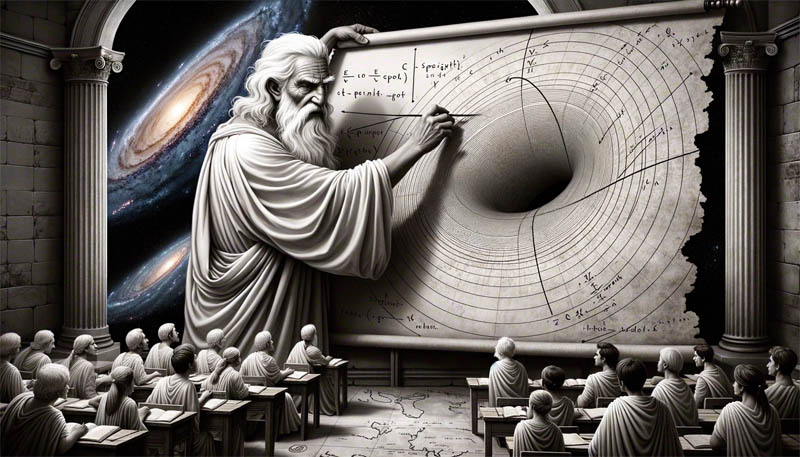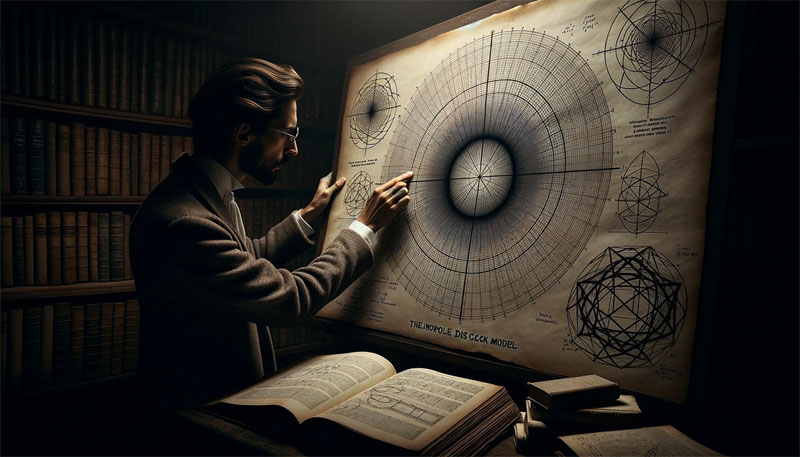Based on the video titled “How One Line in the Oldest Math Text Hinted at Hidden Universes” by Veritasium, this article delves into the perplexing history and implications of Euclid’s fifth postulate in geometry. The video takes us through a fascinating journey that starts with ancient Greek mathematics and ends with the modern understanding of the universe through the lens of general relativity.
Contents
- The Fifth Postulate and Its Controversy
- Attempts to Prove the Postulate
- Hyperbolic Geometry and Its Implications
- Spherical Geometry and Riemann’s Contribution
- General Relativity and Curved Space-Time
- Measuring the Universe’s Geometry
- The Importance of Definitions and Relationships
- The video

The Fifth Postulate and Its Controversy
Euclid’s fifth postulate has been a subject of intrigue and debate for over two millennia. Unlike the first four postulates, which are straightforward and intuitive, the fifth postulate is complex and not immediately obvious. Mathematicians like Proclus believed it should be removed, considering it a theorem rather than a postulate. Attempts to prove it using the first four postulates led to restatements rather than proofs, earning it the name “The Parallel Postulate.”
Attempts to Prove the Postulate
Mathematicians employed various methods to prove the fifth postulate, including direct proof and proof by contradiction. Despite centuries of effort, no one succeeded in proving it definitively. Around 1820, a 17-year-old student named Janos Bolyai began to consider the possibility that the fifth postulate might be independent of the other four, leading him to the concept of hyperbolic geometry.
Hyperbolic Geometry and Its Implications
Bolyai’s work led to the understanding that geometry could exist on curved surfaces, not just flat planes. This revelation opened the door to the concept of hyperbolic geometry, where more than one parallel line can pass through a point not on a given line. This geometry was later represented through the Poincaré disk model, which encapsulates the entire hyperbolic plane into a disc.

Spherical Geometry and Riemann’s Contribution
Spherical geometry, another non-Euclidean geometry, was initially dismissed because it violated Euclid’s second postulate. However, Riemann modified the postulate to include “unbounded” lines, making spherical geometry a valid form of non-Euclidean geometry. This led to the understanding that different forms of geometry could coexist depending on the fifth postulate chosen.
General Relativity and Curved Space-Time
Einstein’s theory of general relativity brought these geometrical concepts into the realm of physics. The theory proposed that massive objects curve space-time, and objects moving through this curved space-time follow geodesic paths. This understanding has been supported by numerous astronomical observations, including the phenomenon of gravitational lensing.
Measuring the Universe’s Geometry
The geometry of the universe can be inferred by studying the cosmic microwave background (CMB). Data from the Planck Mission suggests that the universe is flat, aligning with the predictions of general relativity. This flatness is intriguing given that even a slight variation in mass-energy density could have resulted in a curved universe.
The Importance of Definitions and Relationships
Euclid’s initial definitions for points and lines were criticized for their vagueness and reliance on infinite recursion. The video argues that what truly matters are the relationships between geometric objects, not their individual definitions. This perspective allows for a more flexible understanding of geometry, accommodating various forms like spherical and hyperbolic geometries.

